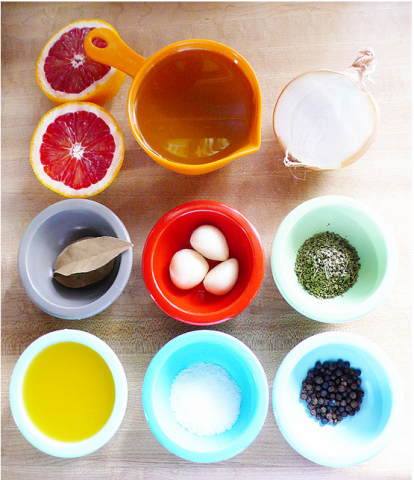 So you are on a quest for eating more nutritionally as a family and yet the task appears rather daunting. Do I have to develop a whole new menu plan with healthy recipes? Who wants to throw out all your family favorite recipes that have been passed down? Or those favorite comfort foods that make your family feel so satisfied and rejuvenated? The last thing any of us moms want to do is start from scratch when it comes to healthy real food eating.
So you are on a quest for eating more nutritionally as a family and yet the task appears rather daunting. Do I have to develop a whole new menu plan with healthy recipes? Who wants to throw out all your family favorite recipes that have been passed down? Or those favorite comfort foods that make your family feel so satisfied and rejuvenated? The last thing any of us moms want to do is start from scratch when it comes to healthy real food eating.
Today, we would like to offer a resource of ideas for helping you adapt your favorite recipes to make them more healthy. The truth of the matter is, you don’t have to throw out your favorite cookbooks and recipes. In fact, practically every recipe on this site has been a family favorite for quite some time, and have only been adapted in the past several years to replace the ingredients with more real whole food alternatives. The flavors may have changed slightly, but overall, choosing to use real food ingredients only increases the flavor and intensity of each recipe.
I have provided here for you a simple chart to convert those standard ingredients in your everyday recipes to real, whole food ingredients.
Sweeteners
Learn about these healthy sweeteners here.
White sugar: Replace with equal amounts of rapadura or sucanat (both of which are whole cane unrefined sugars), or 1/3 less of raw honey or pure maple syrup (Vermont or Canadian sources). You can run rapadura/sucanat through the blender to get a less grainy texture, a perfect alternative for powdered sugar.
Brown sugar: Replace with equal amounts of sucanat or rapadura which have an excellent darker texture and tone similar to brown sugar. If you desire that wetter texture of brown sugar, simply add a Tablespoon of blackstrap molasses to the sucanat or rapadura.
Powered Sugar: replace with powdered sucanat/rapadura, or a dash of stevia.
Grains
White Rice: Replace with brown rice. Basmati brown rice is very similar in texture to white rice. Brown rice takes a longer time to cook so make sure to check the packaging. I usually use 1 cup brown rice to 2 cups water.
White Flour: The Colorado State University Cooperative Extension recommends the following for substituting flour when baking.
1 cup of white, all-purpose flour for baking can be substituted with the following:
• 1 1/2 cups bread crumbs;
• 7/8 to 1 cup corn meal;
• 1/2 cup cornstarch plus 1/2 cup rye, potato or rice flour (sift together 6 times, use with 2 tsp baking powder per cup in quick breads as wheat flour allergy substitute);
• 5/8 cup potato flour;
• 7/8 cup rice flour;
• 1 1/3 cups rolled oats;
• 1 1/4 cups rye flour;
• 1 cup minus 1 Tbsp whole wheat flour.
If you are new to using whole wheat, try using half and half with unbleached white flour (choice unbleached to avoid the dying process), and gradually increase the whole wheat content until you can make it 100% whole wheat. Sourdough options are my favorite for getting a light fluffy texture and delicious results even when using whole wheat.
Bread products: Try to find sprouted whole wheat options (Dave’s Killer Bread, Food for Life or Alvarado Street Bakery are all good sprouted bread companies) & or make sure to check labels that they are made from 100% whole wheat without the addition of high fruitose corn syrup or enriched wheat flours.
Pastas: Your best option is brown rice pastas (Trader Joe’s and Tinkyada are great brands), as they are both gluten free and low in phytates. You can get most varieties of pasta in brown rice varieties now.
Learn how to use more variety in your grain choices here.
Dairy
Generally, choose whole milk alternatives for any recipe calling for low-fat, non-fat, or skim. Whole milk is essential for getting quality fats from dairy products. Low or non-fat alternatives have been processed and are very difficult for the body to digest. If you have access to raw milk, this is your best option. Otherwise, choose whole milk cultured dairy products. Substitute them for equal portions in recipes. Other good alternatives include coconut milk, hemp milk, or organic milk based products.
Margarine: Replace with real butter made from whole milk.
Buttermilk: Replace equally with cultured kefir or yogurt. (Coconut milk kefir is a good choice as well.) You can also make your own milk kefir.
Oils
Your best choices here are olive oil, coconut oil, or butter. Read more about healthy oils here and part 2. Choice cold-pressed unrefined options. I use these three oils exclusively in all my cooking and baking.
Canola/vegetable oil: replace with olive oil for salad dressings, melted coconut oil for baking, and melted butter or coconut oil for sauteing. Real butter can be used for baking or sauteing.
Crisco/Shortening: replace with palm oil, coconut oil, or butter in their solid state.
Meat/Eggs
Look for pastured grass fed varieties for best nutritional value. These are animals raised on pasture that are fed a variety of greens rather than corn products. Wild fish products are preferred to farm raised. Find local sources here.
Canned Goods
The main concern with condensed soup is the MSG content. Either just eliminate these recipes altogether or replace with the following options:
Condensed Soup (Mushroom, Chicken, etc): replace with this easy homemade version or with cultured sour cream (as used in my enchilada recipe which originally called for cream of mushroom soup).
To learn what canned food brands do not have BPA in the lining, check out this list or Treehugger’s list.
Seasonings/Condiments
Table Salt: Replace with sea salt (I recommend RealSalt for its high mineral content). Or replace salt with herbs, either fresh or dried, and other seasonings. Freshly ground pepper and fresh seasonings have so much flavor, you won’t miss the salt.
Thickeners: Replace cornstarch or white flour called for in a recipe to a smaller portion of arrowroot powder (i.e. 1/4 cup flour = 1-2 Tbsp arrowroot powder).
Bouillon cubes: replace with homemade or organic free range chicken/beef broth. Usually a recipe will say 1 bouillon cube and 1 cup water, and you can simply replace both with 1 cup homemade broth. You can also freeze homemade stock in ice cube trays to replace the bouillon cubes.
Pancake Syrup: Replace pancake syrup (the fake HFCS sugar syrup) with pure maple syrup (Vermont or Canadian sources), honey, or fruit syrup.
Mayonnaise: Make your own homemade mayonnaise or purchase coconut oil mayonnaise or safflower mayonnaise.
Ketchup: Make your own or choice fermented ketchup or an organic variety that does not use HFCS.
Bread crumbs/croutons: Make your own!
Vanilla Extract: Use pure vanilla extract (not vanilla flavoring or imitation vanilla) or make your own.
Salad Dressings: The best nutritious salad dressing is a simple balsamic vinegar and cold pressed olive oil. But you can also make your own recipes of salad dressings using healthy fats, as described here.
Worcestershire Sauce (this often has corn syrup): replace with equal amount of white vinegar
.
Baking powder/baking soda: Chose aluminum free varieties (Bob’s Red Mill or Rumford brands).
For further help, please check out Baby Steps to a Real Food Diet.
Did I miss an ingredient? I am sure I did…let me know and I’ll add our source to the above list. Have a favorite recipe that you are just not sure how to adapt? Share below and I’ll try my best to offer some suggestions.
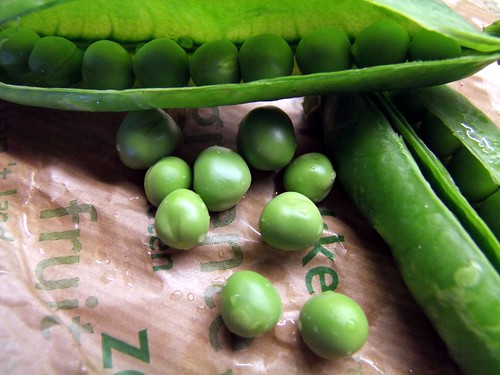
 Since I spend a lot of time in the kitchen between preparing meals and cleanup, I am always looking for further ways of increasing my productivity in this environment. Here are some of my favorite recommendations:
Since I spend a lot of time in the kitchen between preparing meals and cleanup, I am always looking for further ways of increasing my productivity in this environment. Here are some of my favorite recommendations: 10. Keep a running shopping list on the fridge.
10. Keep a running shopping list on the fridge.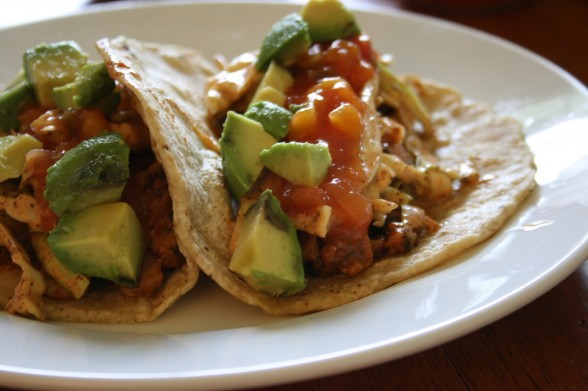 We are huge fans of fish tacos at our house – it is one of my hubby’s favorite dishes and a wonderful summer meal. Plus it is super easy and healthy at the same time. A fun way to add some good nutritional fish to your diet, especially if you are like us and don’t really care for it alone. This recipe uses a
We are huge fans of fish tacos at our house – it is one of my hubby’s favorite dishes and a wonderful summer meal. Plus it is super easy and healthy at the same time. A fun way to add some good nutritional fish to your diet, especially if you are like us and don’t really care for it alone. This recipe uses a 




 “There is no life experience that replaces the connection and significant created by eating together at the table. Whether young or old, when a person experiences trauma, temptation, or embarrassment, being invited to the table makes them feel valued and restores their sense of significance.” – Devi Titus,
“There is no life experience that replaces the connection and significant created by eating together at the table. Whether young or old, when a person experiences trauma, temptation, or embarrassment, being invited to the table makes them feel valued and restores their sense of significance.” – Devi Titus, 
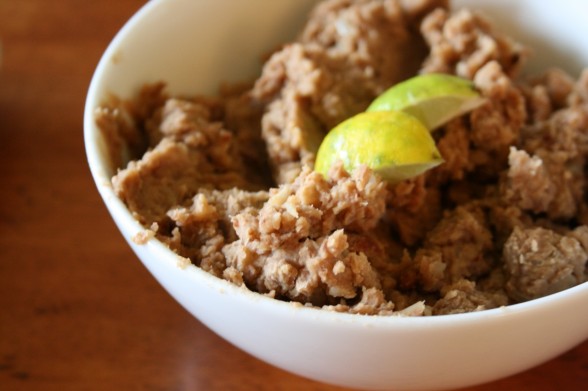 I love easy simple meals that are full of healthy ingredients but don’t require a lot of time or energy to prepare! Burritos is one of those that provides a well balanced meal with lots of flavor and as much variety as you desire. You can add meat of any kind and spice it up with a little taco seasoning mix, or keep to a basic flavorful refried bean for the frugal minded. There are numerous recipes out there for refried beans, but here is our concoction to get you inspired! We make a large batch of refried beans at one time and I freeze them in smaller batches for future easy meals (lunches or dinners). I will put quart size mason jars of refrieds in the freezer for easy access. This cuts down on your work and makes it more simple.
I love easy simple meals that are full of healthy ingredients but don’t require a lot of time or energy to prepare! Burritos is one of those that provides a well balanced meal with lots of flavor and as much variety as you desire. You can add meat of any kind and spice it up with a little taco seasoning mix, or keep to a basic flavorful refried bean for the frugal minded. There are numerous recipes out there for refried beans, but here is our concoction to get you inspired! We make a large batch of refried beans at one time and I freeze them in smaller batches for future easy meals (lunches or dinners). I will put quart size mason jars of refrieds in the freezer for easy access. This cuts down on your work and makes it more simple.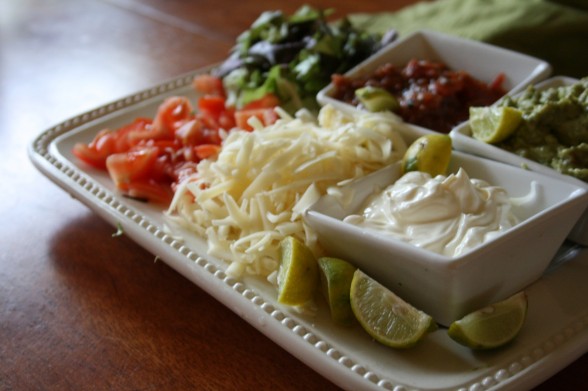 Our favorite toppings include: salsa (our
Our favorite toppings include: salsa (our 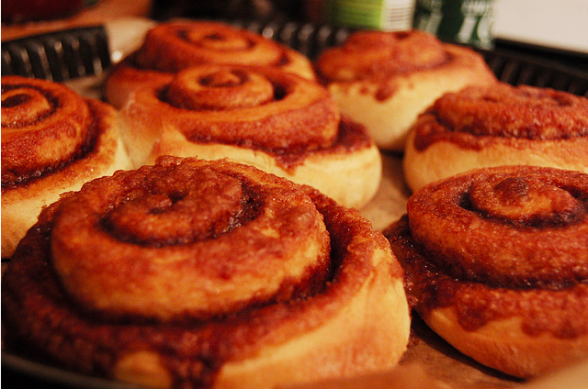

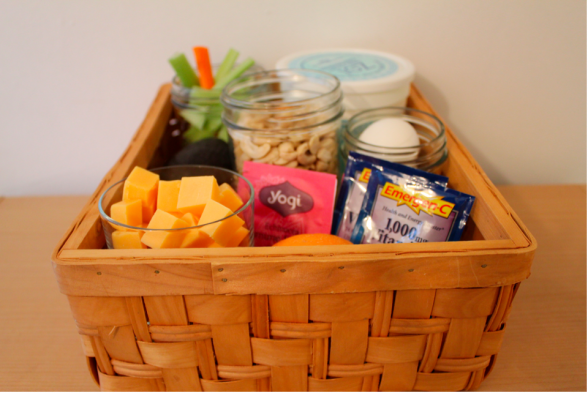 When I’m having a hard day, I love being invited over for dinner. I really don’t care if that means driving 40 minutes away…if you invite us, we’re on our way! There is comfort in someone meeting your most basic needs. For me the comfort of that meal means more than just enjoying food with friends and family. I feel the comfort all through the day as it gives me time for a nap instead of meal prep, more time to sit and chat after dinner instead of dishes, and a little more breathing room in my food budget. Providing meals for others is a practical way we can help meet not only the physical needs of others, but social, emotional, and financial needs as well.
When I’m having a hard day, I love being invited over for dinner. I really don’t care if that means driving 40 minutes away…if you invite us, we’re on our way! There is comfort in someone meeting your most basic needs. For me the comfort of that meal means more than just enjoying food with friends and family. I feel the comfort all through the day as it gives me time for a nap instead of meal prep, more time to sit and chat after dinner instead of dishes, and a little more breathing room in my food budget. Providing meals for others is a practical way we can help meet not only the physical needs of others, but social, emotional, and financial needs as well.


